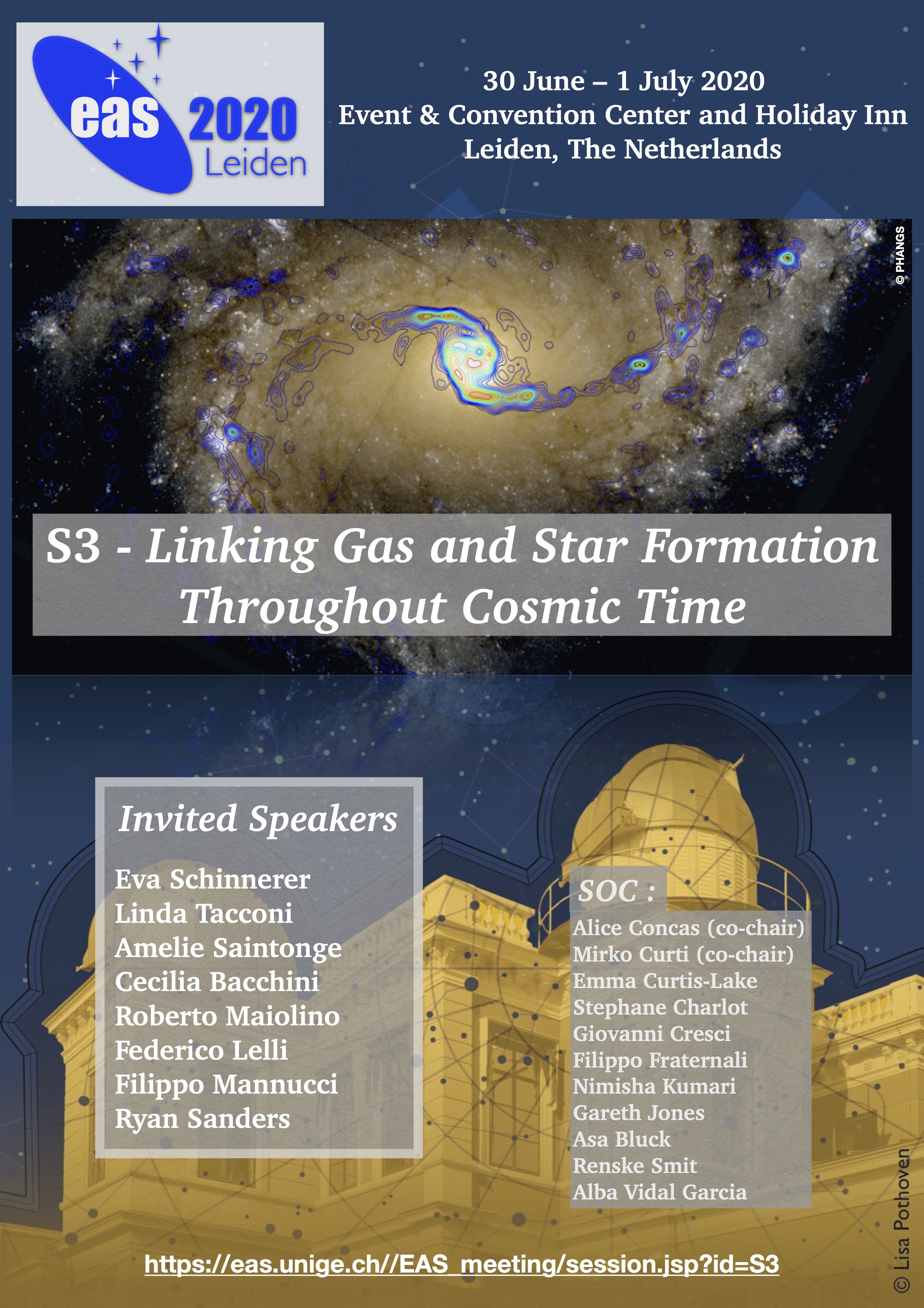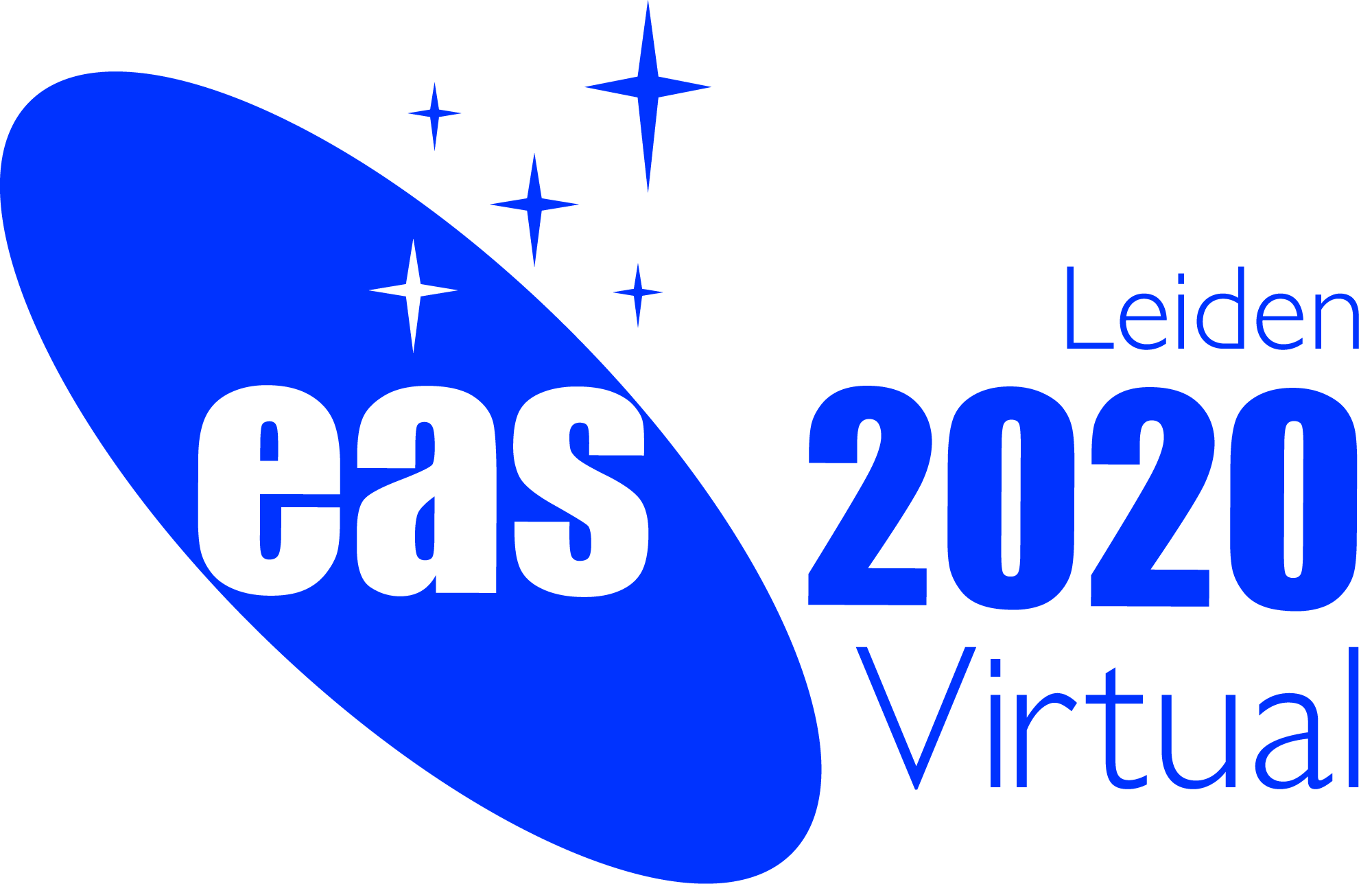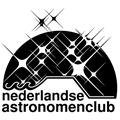Symposium S3
30 June - 1 July 2020
Linking gas and star formation throughout cosmic time
News:
Registration is now open for contributed talks and posters!
Aims and scope
 Gas is the fuel for star formation. Its chemical and dynamical properties determine how it cools, fragments and collapses into stars. Furthermore, the physical processes that regulate star formation are imprinted on the motions and abundances of the gas. To gain a unified view of the interplay between different gaseous phases and star formation we require observations over a huge wavelength range, from rest-frame UV to Radio wavelengths. The progress of instrumentation has defined the samples studied at different wavelengths, but historically the overlap has been minimal. This is now changing, with facilities like ALMA and NOEMA providing the sensitivity required to probe molecular gas in star-forming galaxies across a wide redshift range and optical and near-infrared IFUs (e.g. MUSE, MANGA, KMOS) allowing to get a detailed view of the ionised gas properties and its interplay with star formation in both local and distant galaxies.
Moreover, within a year of this Symposium JWST is scheduled to launch, promising to revolutionise our understanding of galaxy formation and evolution out to beyond z~6, while the immense multiplexing of instruments like MOONS, 4MOST, PFS will soon extend panchromatic SDSS-type analyses to z~1-2.
Gas is the fuel for star formation. Its chemical and dynamical properties determine how it cools, fragments and collapses into stars. Furthermore, the physical processes that regulate star formation are imprinted on the motions and abundances of the gas. To gain a unified view of the interplay between different gaseous phases and star formation we require observations over a huge wavelength range, from rest-frame UV to Radio wavelengths. The progress of instrumentation has defined the samples studied at different wavelengths, but historically the overlap has been minimal. This is now changing, with facilities like ALMA and NOEMA providing the sensitivity required to probe molecular gas in star-forming galaxies across a wide redshift range and optical and near-infrared IFUs (e.g. MUSE, MANGA, KMOS) allowing to get a detailed view of the ionised gas properties and its interplay with star formation in both local and distant galaxies.
Moreover, within a year of this Symposium JWST is scheduled to launch, promising to revolutionise our understanding of galaxy formation and evolution out to beyond z~6, while the immense multiplexing of instruments like MOONS, 4MOST, PFS will soon extend panchromatic SDSS-type analyses to z~1-2.
The goal of this Symposium is to connect communities focussing on the interplay between the gas content and star formation processes in galaxies at high and low redshift, from UV to radio wavelengths.
We aim at identifying which are the key questions currently lying at the intersections of these communities and how we can address them with the new facilities that will be soon coming online.
Programme
- Observing Gas in Star Forming Galaxies Across Cosmic Time: How do the different phases of the interstellar medium vary with galaxy properties and cosmic time, and how do the morphologies of gas, dust and stars relate to each other?
- The Laws of Star Formation: What is the physical origin of the various scaling relations connecting cold gas and star formation and are these relationships fundamental?
- Evolution of Gas Kinematics: What are the roles of mergers, gas accretion, and outflows at different redshift and how are they affecting the gas supply for star formation? What regulates the transition of primordial clumpy, unrelaxed objects to modern rotators?
- Gas-Phase Chemical Abundances: How does the interplay between gas flows, star formation and chemical enrichment evolve with time and how does it affect the observed metallicity scaling relations on global and local scales?
Invited speakers
- Eva Schinnerer (MPIA, Germany)
- Linda Tacconi (MPE, Germany)
- Amelie Saintonge (UCL, UK)
- Cecilia Bacchini (University of Groningen, The Netherlands)
- Roberto Maiolino (University of Cambridge, UK)
- Federico Lelli (ESO, Germany)
- Filippo Mannucci (INAF/Arcetri, Italy)
- Ryan Sanders (UC Davies, US)
Scientific organisers
Dr. Mirko Curti (co-chair) [1], Dr. Alice Concas (co-chair) [1], Dr. Emma Curtis-Lake [1], Dr. Stephane Charlot [2], Dr. Giovanni Cresci [3], Dr. Asa Bluck [1], Dr. Nimisha Kumari [4], Dr. Gareth Jones [1], Dr. Renske Smit [5], Dr. Alba Vidal Garcia [6], Prof. Filippo Fraternali [7]
[1] University of Cambridge, [2] IAP, France, UK, [3] INAF/Arcetri, Italy, [4] STSci, US, [5] Liverpool John Moores University, UK [6] LRA ENS, France, [7] University of Groningen, Netherlands
Contact
Alice Concas: ac2250 @ cam.ac.uk ,
Mirko Curti: mc2041 @ cam.ac.uk
Updated on Mon Mar 02 12:05:42 CET 2020
|

 A power cut will shut down all EAS services on Tuesday, 10 January 2017 starting at 7:30 CET.
A power cut will shut down all EAS services on Tuesday, 10 January 2017 starting at 7:30 CET.



